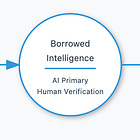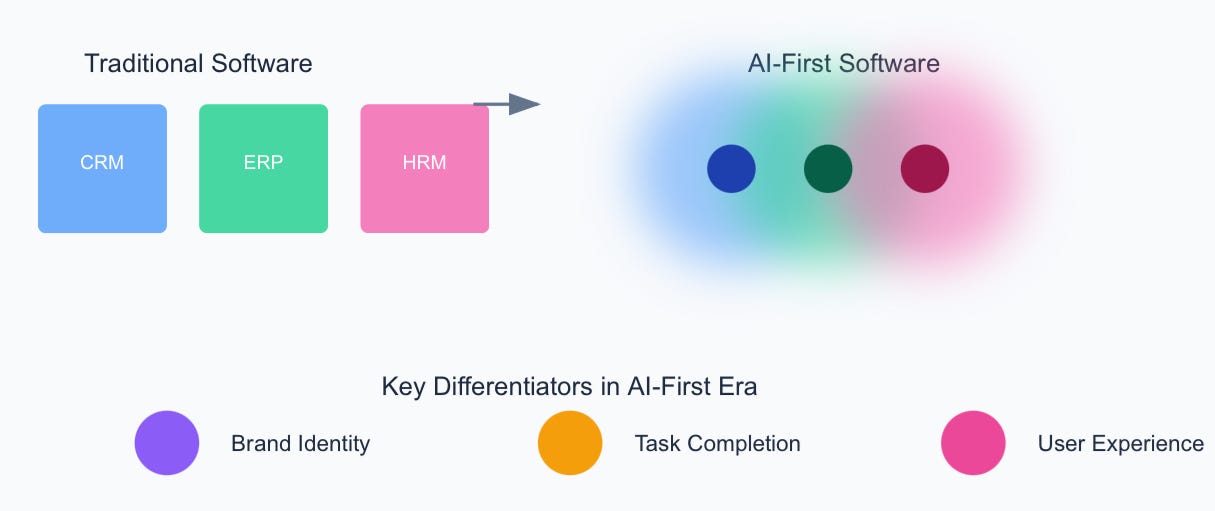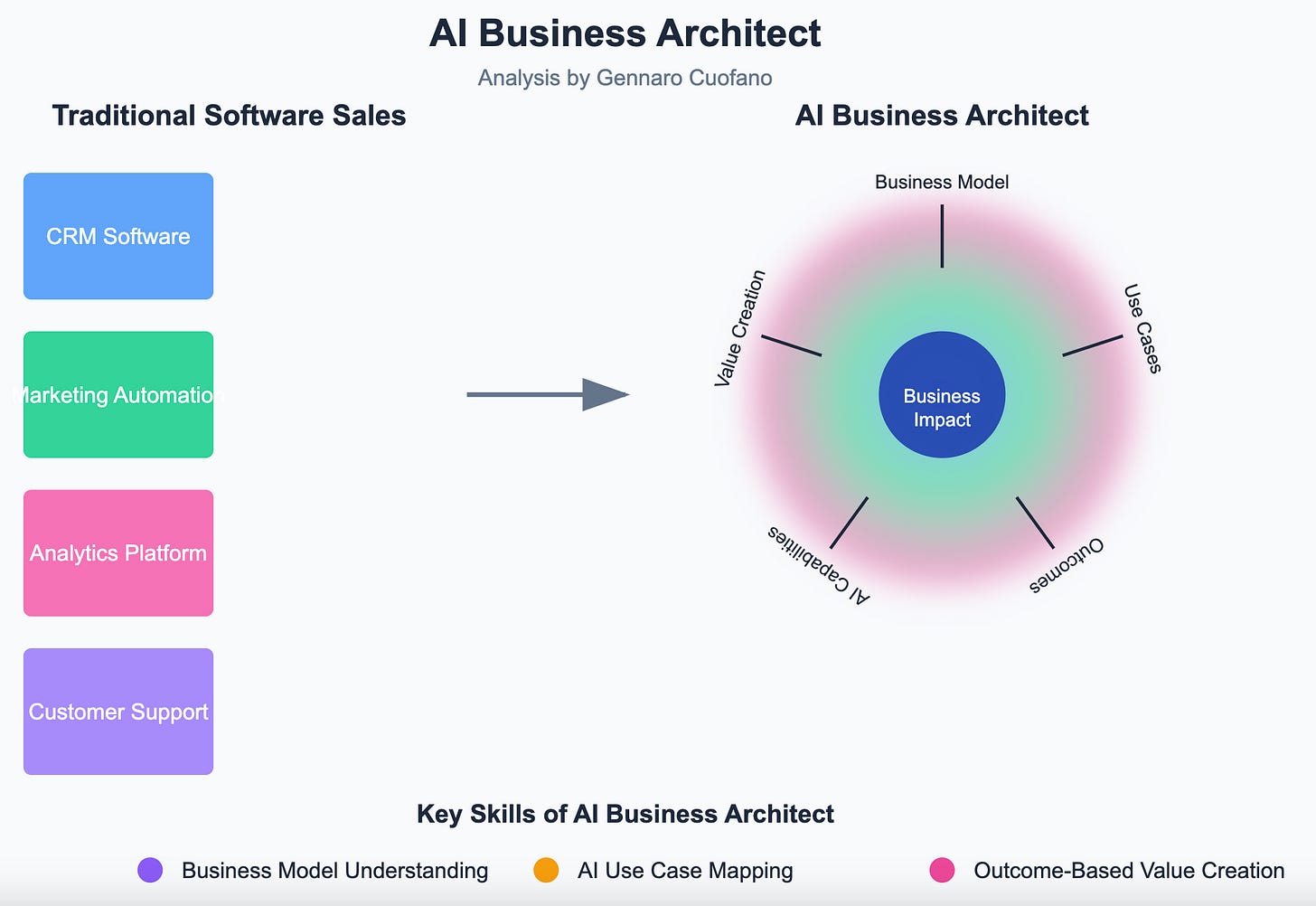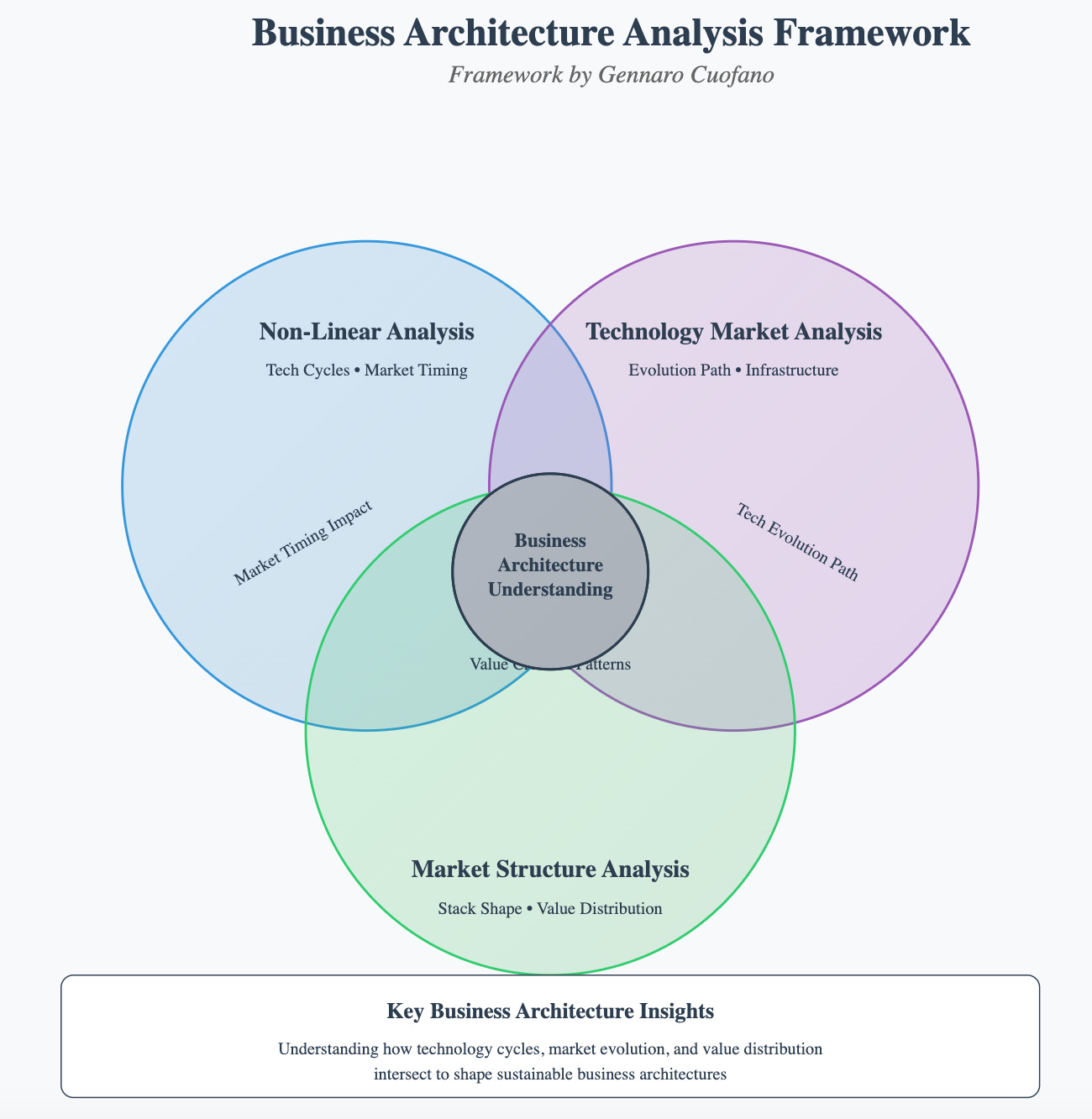
We’re going through a fundamental shift, and we’re just at the beginning of it, which means we’re seeing the challenge of core assumptions that have worked for the last 30 years and the creation of new assumptions emerging.
The last issues have been quite dense, and I want to give you a bit of a recap to navigate the various tools, mental models, and frameworks you can leverage and clarify some of the developing assumptions for this era.
In the end, it’s all about having a “structural understanding” of the new ground that develops as the foundation of an ecosystem that is just springing up.
In AI is Eating SaaS, I’ve explained how AI is quickly and inexorably changing entire verticals, breaking these “narrow commercial use case silos” into a single unified outcome-based use case.
The key thing to understand is the shift from traditional software to autonomous agents.
Which is cascading back, in the business world, by breaking potential silos into a much broader commercial use case.
There, I’ve introduced the concept of “The Business Architect.”
In The AI Business Architect, I’ve explained how the business profession has to change to become a valuable component of building up a market that is just developing.
From that perspective, business architecture analysis can help adequately assess the context.
In Business Architecture Analysis, I gave you the framework to create value as a professional in this specific time window, which I would like to define as “the AI’s sweet spot.”
For instance, leveraging the business architecture analysis framework, you can understand the structural difference between the web and the AI era.
From there, key underlying assumptions emerge, which you will use as the “core beliefs” to navigate that time.
As these core beliefs get shaped up, these become “hard truths” for that paradigm.
These will become the fundamental truths around which the whole ecosystem will operate.
And these will last as long as the underlying foundational tech is relevant and dominant.
-
AI is breaking narrow commercial use case silos, moving towards unified, outcome-based solutions.
-
This shift restructures entire industries, making software more autonomous and adaptive rather than just a set of static tools.
-
AI eliminates traditional business silos, creating broader commercial applications.
-
Businesses must adapt to AI-driven models, moving beyond traditional SaaS to intelligent automation.
-
A new professional role emerges—The AI Business Architect.
-
This role bridges AI-driven changes and business strategy, ensuring alignment with the evolving AI-powered economy.
-
Helps assess the evolving market context and identify strategic opportunities.
-
Provides a framework to create value, particularly during the “AI’s sweet spot”—a critical phase of transformation.
-
AI transforms the assumptions that businesses operate on.
-
Identifying these underlying assumptions helps define “core beliefs” necessary to navigate the AI revolution.
-
As businesses adopt AI-driven assumptions, these solidify into hard truths.
-
These truths form the foundation of the AI ecosystem, lasting as long as foundational AI technologies remain dominant.
-
AI is reshaping the software industry, turning SaaS into AI-powered autonomous solutions.
-
Businesses must adapt to a broader, AI-driven commercial landscape.
-
The AI Business Architect plays a crucial role in navigating and leveraging AI’s market shift.
-
The Business Architecture Analysis Framework provides a strategic lens through which to operate in an AI-driven economy.
With massive ♥️ Gennaro Cuofano, The Business Engineer
This is part of an Enterprise AI series to tackle many of the day-to-day challenges you might face as a professional, executive, founder, or investor in the current AI landscape.
















